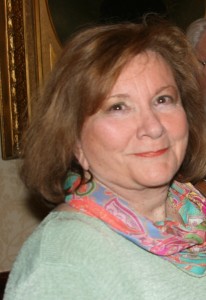 With tax day over, how did you file your taxes? According to the news, more and more people are using e-filing, including those who use a tablet at some some wifi place. Scary thought, but communication is changing.
With tax day over, how did you file your taxes? According to the news, more and more people are using e-filing, including those who use a tablet at some some wifi place. Scary thought, but communication is changing.
Long ago, as the earth was cooling, people used odd machines called “typewriters” to compose notes to one another.
These machines were developed after the discovery of electricity, but they were powered by a different source, human fingers. And they were called “manual” because of this.
They were difficult to use, these first “manual” typewriters. They consisted of a series of letters at the end of long rods, attached to a board, also with letters. When a finger hit a letter on the “keyboard”, the rod that held that letter would move and imprint the letter on a piece of paper, using an inked ribbon.
This was a huge step up from clay tablets, stone carving or foul fowl feathers, and the new technology was embraced by most people.
Not by the folks who wrote the stories you found in your daily newspaper, though.
These guys were lazy, or just conserving energy, so when they typed something other than their story, they used shortcuts.
“Manual” typewriters took a lot of pressure to pound the “keys” on the “keyboard” for that the impression showed up on the paper, so the first thing those guys eliminated was capital letters.
To print a capital took an extra “keystroke”. The next thing those guys eliminated was a lot of punctuation. Again, an extra stroke.
Instead, they’d sling the carriage return and just start another paragraph.
So for a time everybody wrote like e.e.cummings.
But that wasn’t enough. It still took extra time to write notes or instructions to the men who actually set the type, using a machine adapted from a typewriter called a “linotype.” This machine produced a line of type (letters) molded from the pot of hot, liquid lead at the side of the machine.
Not incidentally, the molten lead floated around in the air and coated everything, including the coffee we drank.
Writing was getting trimmed, but it sill took more time than was warranted on composing messages to friends or other useless drivel, like notes from your interview, so abbreviations evolved.
thnx
c u
u r a pal
luv
And it wasn’t enough to use abbrv., you could also cut whole words out. For instance, if you wanted to say, “I’d appreciate it if you would respond to my question,” you could say “gimme yes or no.”
Invariably, the “I” was dropped also. “hope all is well,” “coming over?”
As things go, this technology went the way of swan feathers, until today lots of people correspond using only their thumbs and a string of seemingly miscellaneous letters. OMG, BFF, ROTHWL, LOL, IMHO.
Gibberish? I think not. Just the evolving result of those memos and notes we typed to each other. I still seldom use caps when I correspond, now by email, with friends still in the business.
When you write email, do you write in complete sentences and use capitals?
I’m tickled to think that the texters believe they’ve discovered something new.
We got there first.
 When the earth was cooling, Michele Drier was a staff writer at the San Jose Mercury-News and caught the tail end of manual typewriters and hot lead. The lead is gone but the caps never came back.
When the earth was cooling, Michele Drier was a staff writer at the San Jose Mercury-News and caught the tail end of manual typewriters and hot lead. The lead is gone but the caps never came back.
Her mysteries, Edited for Death and Labeled for Death are set at a daily newspaper. She also writes The Kandesky Vampire Chronicles and her most recent book is SNAP: White Nights, book seven of the Chronicles..
Michele Drier was born in Santa Cruz and is a fifth generation Californian. She’s lived and worked all over the state, calling both Southern and Northern California home. During her career in journalism—as a reporter and editor at daily newspapers—she won awards for producing investigative series.
SNAP: White Nights the seventh book of her paranormal romance series, The Kandesky Vampire Chronicles, was published March 20. She’s working on the eighth book in the series, SNAP: All That Jazz, scheduled for publication in late spring 2014.
She also writes the Amy Hobbes Newspaper mysteries, Edited for Death and Labeled for Death. A third book, Delta for Death, is coming in 2014.
Links: http://www.facebook.com/AuthorMicheleDrier
mjdrier@gmail.com
http://amzn.com/e/B005D2YC8G
http://www.micheledrier.com
